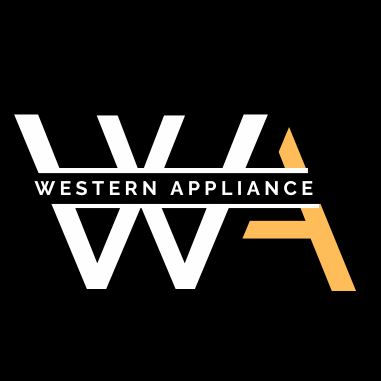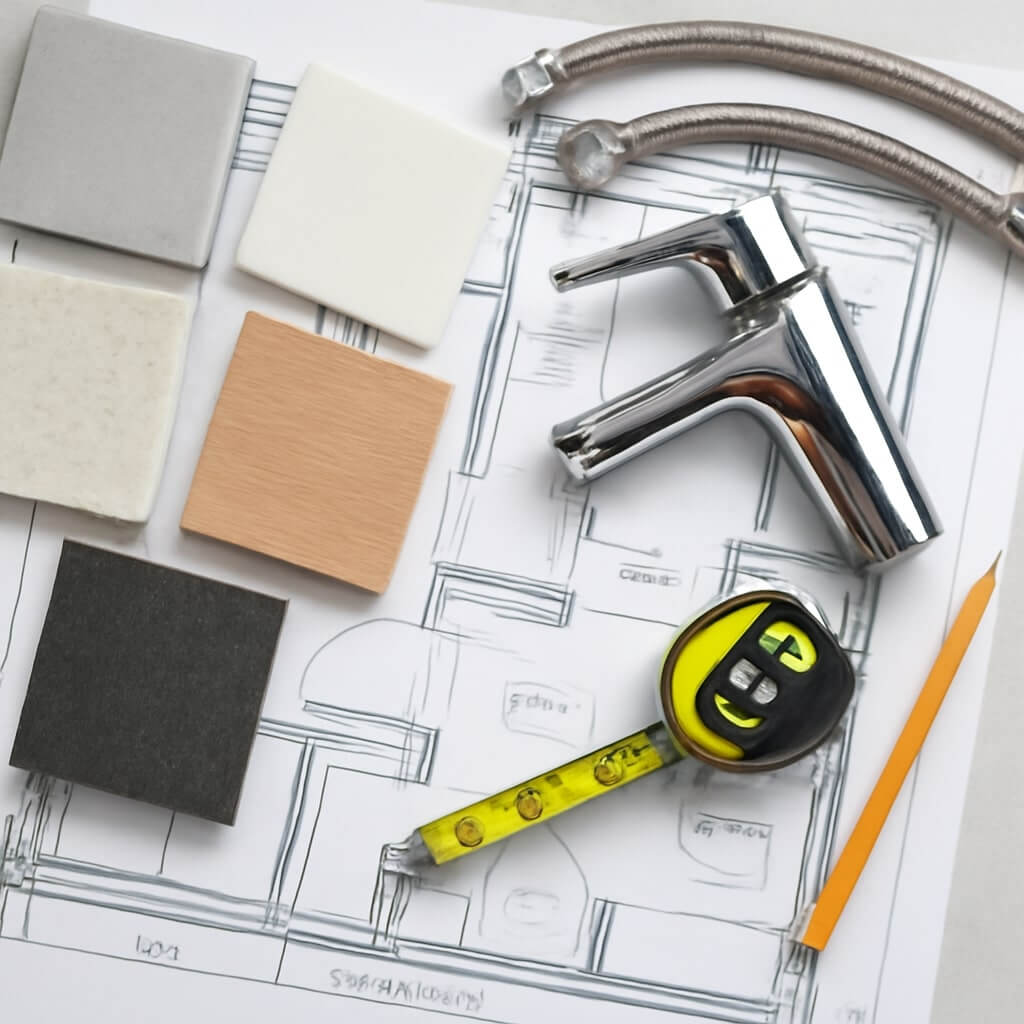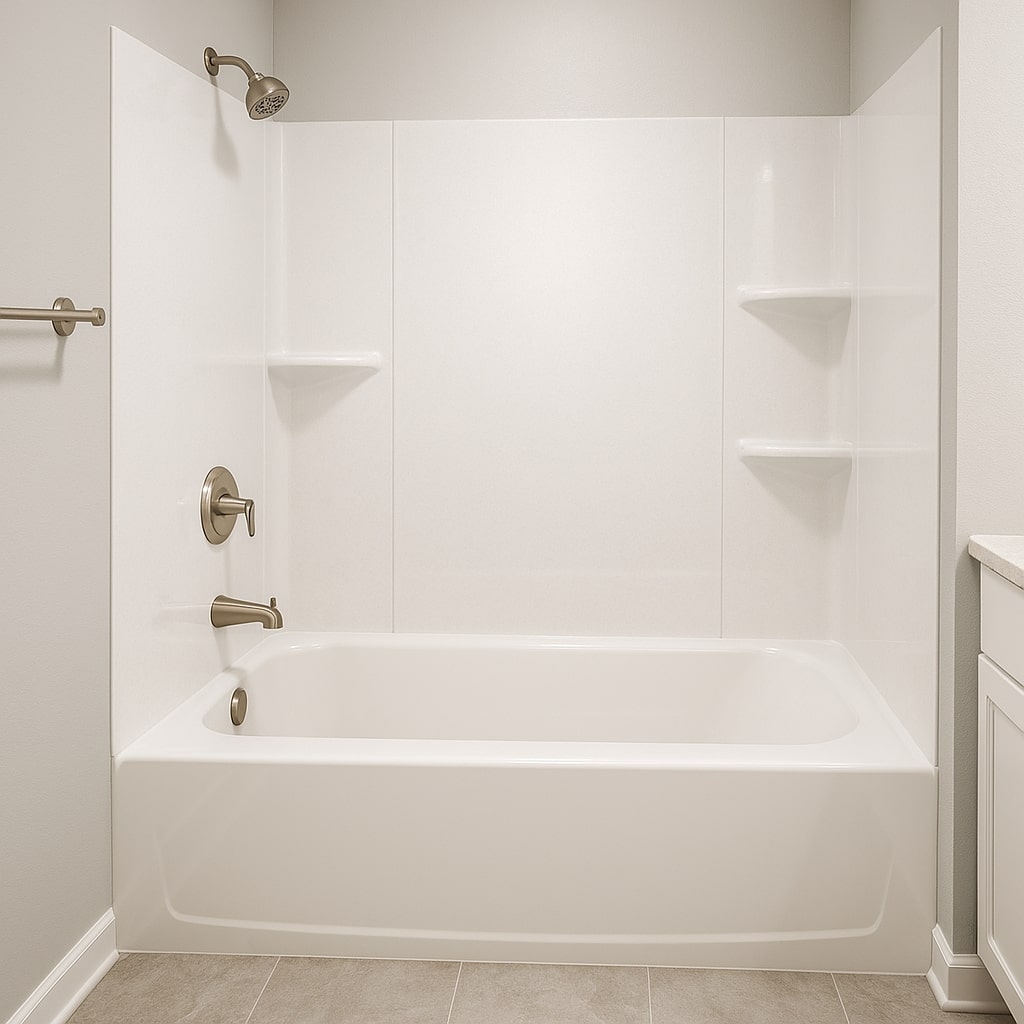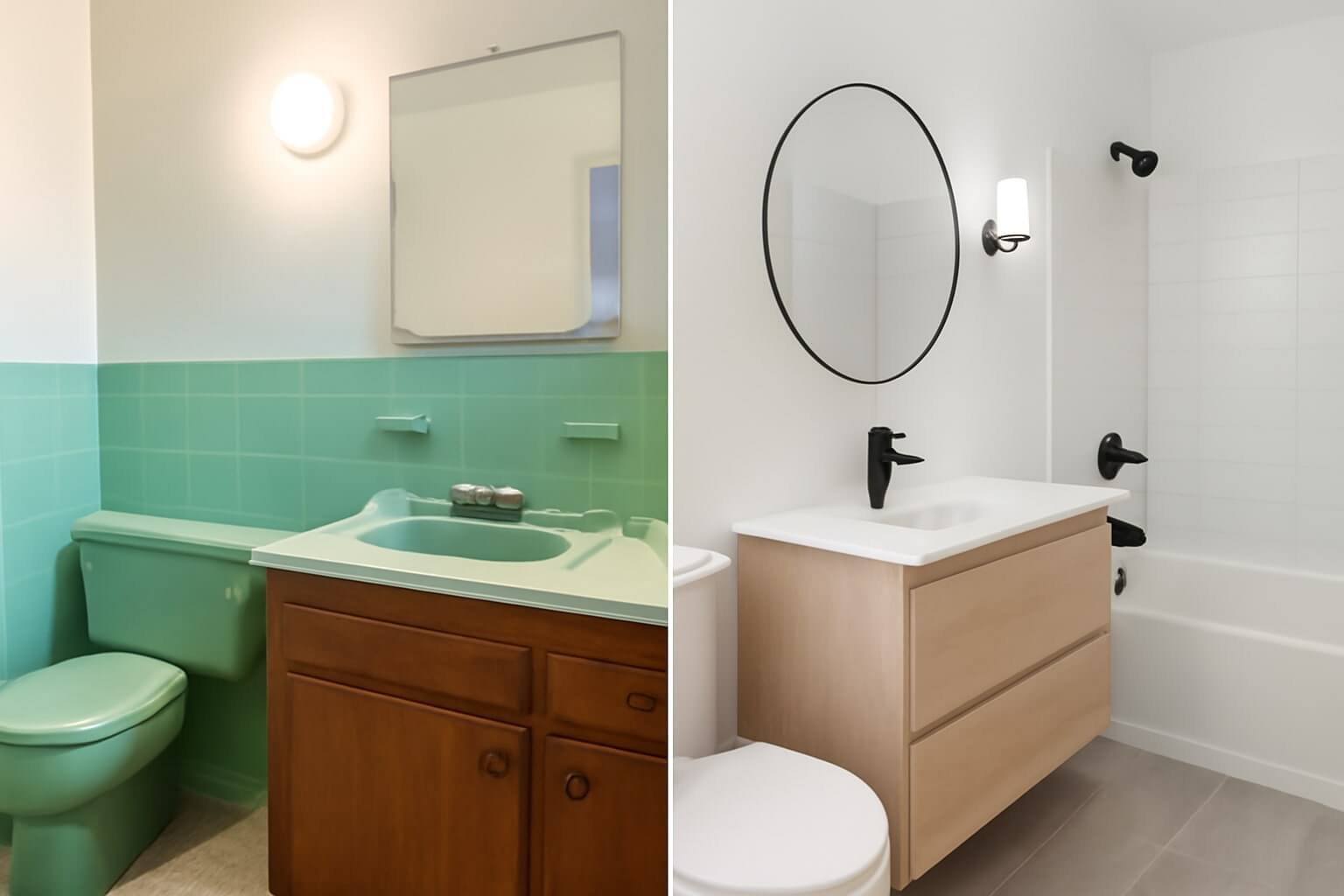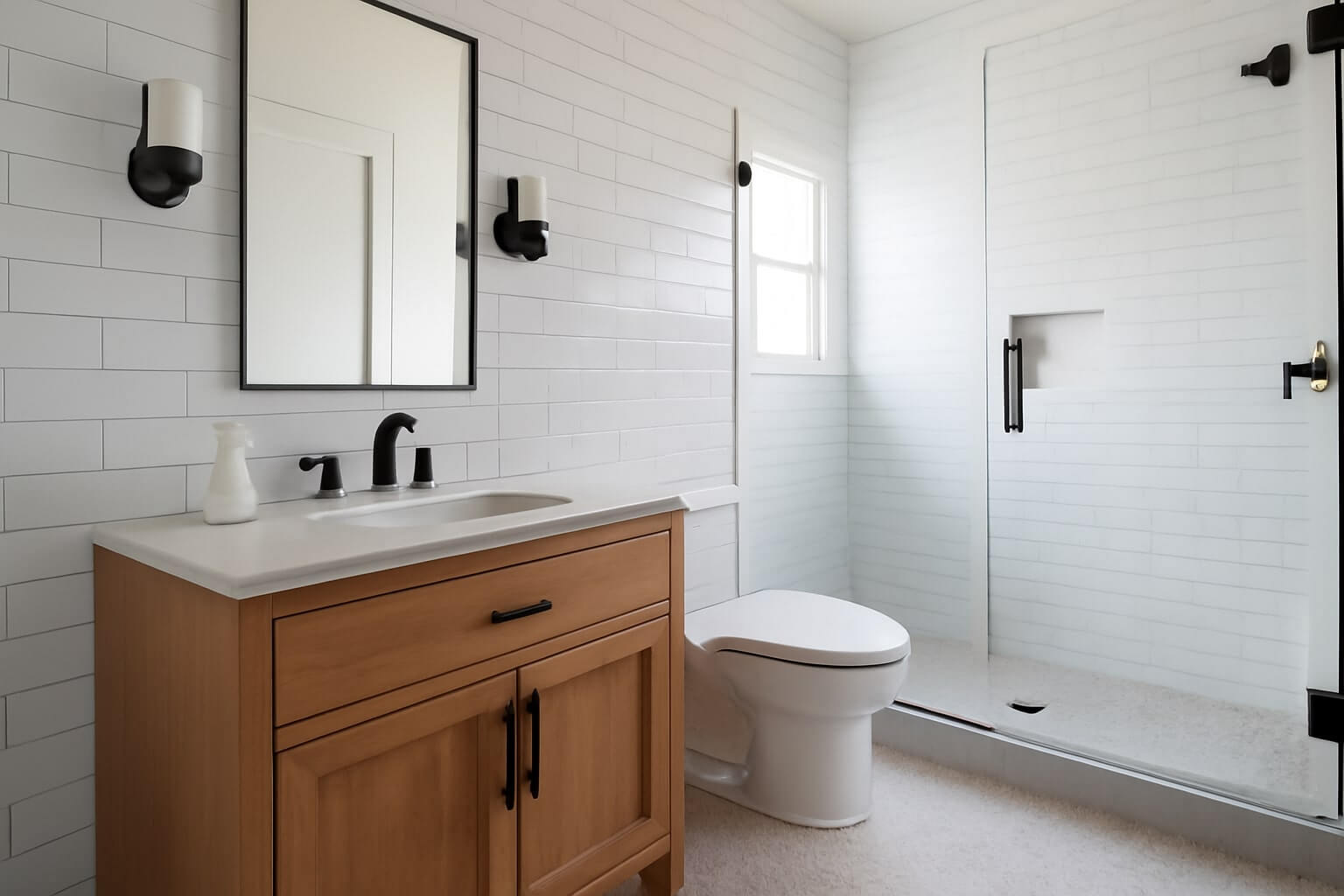When planning a bathroom remodel, you need a clear estimate template to guide your project. Understanding the ten essential components can help you anticipate costs and avoid surprises. From labor and material expenses to compliance with local regulations, each element plays a critical role in your renovation’s success. Let’s break down these components and explore how they can shape the outcome of your remodel. What’s the first piece you should consider?
Key Takeaways
- Include labor costs, accounting for productivity variations and negotiation opportunities to secure better deals.
- Specify material costs, balancing quality and price while considering sustainable options for an eco-friendly remodel.
- Detail plumbing and electrical work, ensuring compliance with local codes and incorporating modern fixtures for functionality.
- Allocate a contingency budget of 10% to 20% for unexpected expenses, maintaining control over the overall project cost.
- Schedule inspections at key project stages to ensure compliance and address any flagged issues promptly for safety and quality.
Labor Costs
When planning your bathroom remodel, understanding labor costs is crucial, as they often make up a significant portion of your budget.
You should consider factors like labor productivity, which can vary based on the complexity of your project. Higher efficiency often leads to lower overall costs.
Engaging in labor negotiation with contractors can also help you secure a better deal. By discussing timelines and expectations upfront, you can prevent misunderstandings and guarantee that everyone’s on the same page.
Negotiating with contractors on timelines and expectations can prevent misunderstandings and ensure a smooth remodeling process.
Always get multiple quotes to compare rates and services, helping you make informed decisions about your remodeling project.
Material Costs
Labor costs are just one piece of the remodeling puzzle; material costs play an equally important role in shaping your budget.
When sourcing materials for your bathroom remodel, consider both quality and price. Research local suppliers, and don’t hesitate to explore online options for competitive pricing.
Look for sustainable options, like recycled tiles or low-VOC paints, which can enhance your space while being eco-friendly.
Prioritize materials that offer durability and style, ensuring your investment stands the test of time.
Fixtures and Fittings
While planning your bathroom remodel, selecting the right fixtures and fittings can greatly impact both functionality and aesthetics.
Consider these essential elements:
When planning your bathroom remodel, keep essential elements in mind for optimal functionality and aesthetic appeal.
- Fixture Styles: Choose between contemporary, traditional, or minimalist designs to match your overall theme.
- Fitting Materials: Opt for durable materials like stainless steel, brass, or chrome for longevity and easy maintenance.
- Water Efficiency: Look for fixtures that conserve water without sacrificing performance, which can save you money in the long run.
Demolition and Disposal
When you start your bathroom remodel, evaluating the existing structures is essential to guarantee a smooth demolition process.
You’ll also want to implement effective waste management strategies to handle the debris responsibly.
Plus, keeping safety and compliance standards in mind will protect both you and the integrity of your home.
Assessing Existing Structures
Before diving into your bathroom remodel, it’s crucial to assess the existing structures, as this step lays the foundation for a successful project.
Start by:
- Assessing structural integrity: Check for any signs of damage, such as cracks or mold, to verify your walls and floors can support the new design.
- Evaluating plumbing systems: Inspect pipes and fixtures for leaks or corrosion that could disrupt your remodel.
- Identifying electrical needs: Verify existing wiring can handle new fixtures and appliances safely.
Taking these steps will help you avoid costly surprises and create a solid plan for your remodel.
Waste Management Strategies
As you commence your bathroom remodel, effective waste management strategies for demolition and disposal are essential to keep your project organized and environmentally friendly.
Start by evaluating what materials can be salvaged or recycled to promote waste reduction. Consider donating usable fixtures or appliances to local charities.
For demolition debris, set up designated bins for different materials, ensuring that recyclable materials like metal, wood, and drywall are separated.
Partnering with a waste management service can streamline the process, helping you dispose of non-recyclable waste responsibly.
Safety and Compliance Standards
Guaranteeing safety and compliance standards during the demolition and disposal phases of your bathroom remodel is essential not only for the well-being of everyone involved but also for adhering to local regulations.
To stay on track, follow these key guidelines:
- Understand Building Codes: Familiarize yourself with local building codes to guarantee your demolition complies with legal requirements.
- Follow Safety Regulations: Use appropriate personal protective equipment (PPE) and guarantee the workspace is secure.
- Proper Waste Disposal: Dispose of materials in accordance with local regulations, especially hazardous waste, to avoid fines and guarantee community safety.
Plumbing and Electrical Work
When you’re planning a bathroom remodel, one of the most vital aspects to contemplate is the plumbing and electrical work, since these systems are critical for functionality and safety.
Start by evaluating your plumbing upgrades—consider installing modern fixtures or relocating pipes for better efficiency. Don’t forget about water pressure and drainage systems.
Next, tackle electrical considerations, like adding GFCI outlets for safety and guaranteeing adequate lighting. You may even want to incorporate heated flooring or additional outlets for convenience.
Proper planning in these areas not only enhances your bathroom’s functionality but also safeguards your investment and assures compliance with local codes.
Flooring Options
Choosing the right flooring for your bathroom remodel can greatly impact both aesthetics and functionality. Here are some popular options to take into account:
- Tile Patterns: From classic subway to intricate mosaic designs, tile offers endless customization. It’s durable, easy to clean, and water-resistant.
- Vinyl Advantages: Vinyl flooring is budget-friendly, soft underfoot, and available in various styles, mimicking wood or stone. It’s also moisture-resistant, making it ideal for bathrooms.
- Luxury Vinyl Plank: This combines the beauty of hardwood with vinyl’s practicality, providing comfort and style without sacrificing durability.
Select the flooring that best suits your needs and enhances your bathroom’s overall design!
Wall Treatments
Transforming your bathroom starts with selecting the right wall treatments that not only enhance the space’s aesthetics but also provide practical benefits.
You have a variety of wall texture options, from smooth finishes to textured wallpaper, allowing you to create the desired ambiance.
Consider wall color schemes that complement your overall design—soft pastels can evoke tranquility, while bold colors can energize the space.
Don’t forget about moisture-resistant materials, especially in a bathroom setting.
Lighting Choices
How can the right lighting elevate your bathroom’s atmosphere?
Thoughtful lighting choices can enhance both functionality and aesthetics.
Incorporate these key elements for a balanced approach:
- Ambient Lighting: Use ceiling fixtures or recessed lights to create a warm, inviting glow that fills the space.
- Task Lighting: Install sconces or backlit mirrors around the vanity for focused illumination during grooming.
- Accent Lighting: Highlight architectural features or decor with LED strips or spotlights to add depth and interest.
Permits and Inspections
Before you start your bathroom remodel, it’s essential to understand the permits you’ll need and the inspection process involved.
Not only do these steps guarantee compliance with local regulations, but they also protect your investment and guarantee safety.
Let’s break down what permits are required and how inspections work to keep your project on track.
Required Permits Overview
When planning a bathroom remodel, have you considered the necessary permits and inspections?
Understanding the permitting process is essential to avoid delays.
Here are three key application requirements you’ll likely encounter:
- Detailed Plans: Provide architectural drawings that outline your design.
- Scope of Work: Clearly describe the tasks involved in your remodel.
- Property Information: Include your property address and any zoning details.
Inspection Process Steps
Once you’ve secured the necessary permits for your bathroom remodel, the inspection process comes into play. This step guarantees everything meets local codes. You’ll need to follow an inspection checklist, which outlines the evaluation criteria for plumbing, electrical work, and structural integrity. Inspections typically occur at various stages, so be prepared for multiple visits.
Here’s a quick overview:
| Inspection Stage | Purpose |
|---|---|
| Rough Inspection | Check framing and plumbing |
| Electrical Inspection | Verify wiring and outlets |
| Final Inspection | Confirm everything’s complete |
| Compliance Check | Confirm adherence to codes |
Make certain to address any issues flagged during inspections!
Compliance With Regulations
Steering through the labyrinth of regulations for your bathroom remodel can be intimidating, but understanding compliance with permits and inspections is crucial for a successful project.
Here’s what you need to know:
- Research Local Regulatory Guidelines: Each area has specific rules, so familiarize yourself with what’s required.
- Obtain Necessary Permits: Don’t skip this step; working without permits can lead to fines or project delays.
- Schedule Compliance Checks: Inspections at key stages guarantee your work meets safety standards and regulations.
Contingency Budget
A well-planned bathroom remodel should always include a contingency budget, typically set at 10% to 20% of the total project cost.
This budget is essential for effective contingency planning, allowing you to handle unexpected expenses that often arise during renovations.
Whether it’s hidden water damage or upgraded plumbing, these surprises can derail your project if you’re unprepared.
By allocating funds for these potential issues, you’ll maintain control over your budget and timeline.
Don’t let unforeseen costs catch you off guard—ensure your remodel stays on track and stress-free by including a contingency budget in your estimate template.
Conclusion
Incorporating these ten essential components into your bathroom remodel estimate template can make all the difference in your project’s success. By clearly outlining labor and material costs, fixtures, and other important elements, you’ll set realistic expectations and stay within budget. Don’t forget to factor in contingencies and compliance with regulations to avoid surprises down the road. With careful planning, you can transform your bathroom into a beautiful and functional space that meets your needs and exceeds your expectations.
